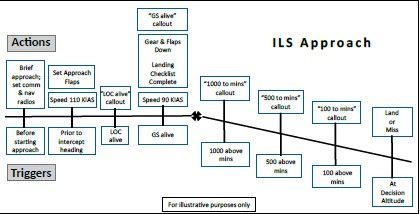There are a few reasons airlines are safer than general aviation. Now, airline pilots commonly fly at least 50 to 80 hours a month or more. Of course, mere frequency doesn’t necessarily make one better at performing a task, but that frequency when coupled with rigorous performance and a desire to improve one’s skill does.
Then, there’s that consistency, the rigor that’s applied to airline operations. We’ve talked about standard operating procedures, profiles, safety management systems, and other mechanisms used by professional flight operations. Sure, the average general aviation pilot has little interest in bulky procedures, but all those things exist for one reason: They improve safety.
Last month I mentioned Tom, my friend who’s struggling to move from a basic retract single to a far more complex aircraft. Tom has flown in the same environment for years, and this new environment is outside his comfort zone. But he’s working on it and already has a lot of training in the new airframe, where his success is sporadic. One day he absolutely nails it; the next it’s like his first time in the airplane. Tom lacks consistency. Wassupwidat?
Actually, Tom identified the issue months ago, but I missed it at the time. He’s unable to rigorously and consistently apply his hard-earned knowledge and skill. I thought about that a bit before it hit me.
There are multiple paths to consistency. One is frequency, which is how most of us achieved consistency when we started flying. But, newer, more complex aircraft can’t always wait that long. We must perform routine tasks routinely, releasing brain power for the non-routine. So, apply more rigor to routine procedures to perform the same tasks the same way every time, without thinking about it.
In a series of articles in 2017, we discussed SOPs for GA. Then, last October in Paul Preidecker’s “What’s Your Profile?” we drilled down into profiles. Rigorous use of profiles improves consistency and safety. The article explains profiles, but I’d like to discuss how to get them to work for you.
Don’t confuse a checklist with a profile. The profile governs how you perform a procedure. You’ll start by reviewing all the important things you want to incorporate in a given profile. Then, chart those as explained. You’ll probably spend an hour or more building one profile, and you’ll probably need a few for each different type of takeoff (normal, aborted, etc.), one for each type of approach, and maybe a few others. So, plan a number of hours just creating them.
Then you must learn them. Start with armchair flying. Close your eyes and visualize the specific procedure, walking through it one trigger at a time, mentally rehearsing the profile. Even move your hands as needed (gear, flaps, fuel pumps, etc.) Do this until you perform them with no hesitation. Then, finally, fly them, always using those profiles to make your flights more consistently safer. Trust me; it works.





